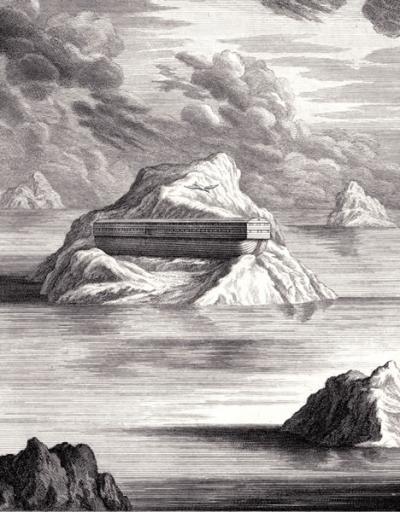Boulder, Colorado, USA - Throughout history, people have sought to understand how the world came to be and how it has changed over time. This curiosity has produced a rich legacy of science and philosophy and also influenced religion and theology. In the November 2012 issue of GSA Today, David Montgomery of the University of Washington examines the history of geology and of biblical views regarding Earth's origins.
Montgomery's main premise is that throughout most of the past several hundred years, scientists and theologians engaged in extensive collaboration regarding issues like Earth's age and origin. The common bond that sustained this rich exchange of ideas was a respect for reason and a trust in the scientific process.
As modern science evolved, so did many shared questions and struggles regarding how to best understand Earth's age as well as how new scientific findings harmonized with or conflicted with theological understanding as conveyed in works such as the Bible.
These questions and struggles persist into the present, most notably in geology, where vast differences in the answers to such fundamental questions as "how old is this planet?" both correlate and contrast with some religious beliefs.
In terms of Christian theology, the main problems that Montgomery discusses are Earth's age and the role of a global flood ("Noah's flood") in geological history. While these issues -- that the Earth is not over four billion years old, but is actually only a few thousand years old, and that most of the geological history recorded by rocks was formed as a result of Noah's flood -- are raised by modern-day young earth creationists, they have also been vigorously studied by both scientists and theologians over the past several hundred years.

Noahs Ark as the floodwaters recede as depicted in plate LXII to illustrate Genesis 8:89 in Johann Scheuchzers Physica Sacra (Sacred Physics, 1731).
(Photo Credit: GSA Today, v. 22, no. 11, p. 4-9.)
Montgomery shows that geologists have provided a vast array of evidence that refutes both a young age for Earth and a worldwide flood. These conclusions provoked significant debate among Christian writers during the early 1800s but many acknowledged the validity of the scientific evidence. They subsequently adapted their view of creation as spelled out in the Bible, recognizing that it might be figurative instead of literal, and that Noah's flood was likely a regional event that involved the Caspian or Black Sea.
Young Earth Creationism, according to Montgomery, developed from several influential efforts, beginning in the 1920s. The movement would revive the global (Noah's) flood explanation for the geological record, resurrecting the older theory mainly in an effort to question scientific conclusions regarding the biological evolution of life on Earth.
The young earth creationists of the early twentieth century - and those of today - evolved in order to reject a scientific basis for understanding of the history of our planet. They instead rely on a literal interpretation of Biblical accounts of creation.
Those arguments are effective. Montgomery points out that despite overwhelming scientific evidence to the contrary, more than 40% of Americans believe Earth is less than 10,000 years old. However, Montgomery hopes that by pointing to our longer-term history and mutual heritage of using scientific observations of the natural world to inform both secular and religious understanding, the relationship between science and religion can undergo further evolution, and faith in science can be restored.